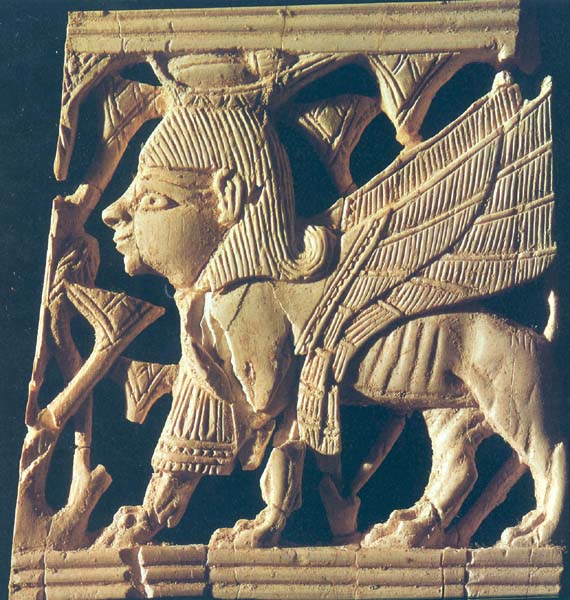Image Details

A Sphinx strides through a thicket of lotus blossoms in this fragment of an openwork ivory plaque. A mythological creature with a human head and a lion’s body, the sphinx is an Egyptian decorative motif adopted by the Phoenicians. Sometimes the sphinx has wings, as in this example dated to the ninth or eighth century B.C. This sphinx also wears a flattened double-crown of Egypt, a curled wig, and a “Phoenician apron.” The animal’s rib cage and the musculature of its body appear in detail despite the diminutive size of the ivory—only 3 3/8 inches high. Although found in Samaria, this sphinx resembles, several pieces from Nimrud.
An expensive and luxurious commodity in the ancient Near East, ivory is condemned by the prophet Amos in his indictment of the
